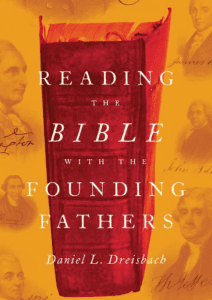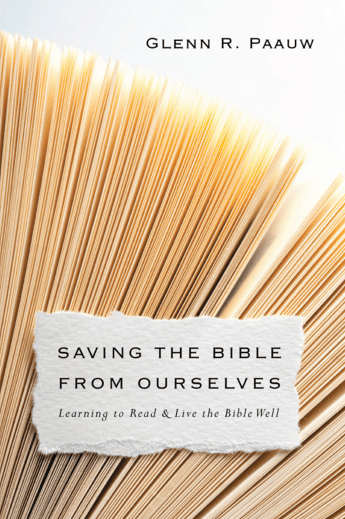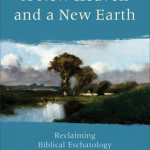 The fourth and fifth chapters of Ronald E. Osborn’s new book Death Before the Fall: Biblical Literalism and the Problem of Animal Suffering look at the nature of science and the push for mechanisms capable of explaining the events related in Scripture. In the practice of science we look for explanatory mechanisms that make sense of broad swathes of evidence. It is certainly possible to describe the solar system in geocentric terms, but as we learned more about the physics involved it became increasingly clear that the “natural” way to describe the solar system was heliocentric – with the most massive object in the solar system at the center. The influence of the earth’s gravitational field on the other objects in the solar system is insignificant compared to the sun. The sun accounts for 99.86% of the mass in the solar system while the earth accounts for about o.ooo3%.
The fourth and fifth chapters of Ronald E. Osborn’s new book Death Before the Fall: Biblical Literalism and the Problem of Animal Suffering look at the nature of science and the push for mechanisms capable of explaining the events related in Scripture. In the practice of science we look for explanatory mechanisms that make sense of broad swathes of evidence. It is certainly possible to describe the solar system in geocentric terms, but as we learned more about the physics involved it became increasingly clear that the “natural” way to describe the solar system was heliocentric – with the most massive object in the solar system at the center. The influence of the earth’s gravitational field on the other objects in the solar system is insignificant compared to the sun. The sun accounts for 99.86% of the mass in the solar system while the earth accounts for about o.ooo3%.
Scientific explanations rest on the assumption that the universe is intelligible and explicable. While our knowledge and understanding is limited there is an expectation that eventually all the pieces of evidence will fall into place. Most theories contain “patches” covering areas where understanding is not complete and where the evidence at times seems contradictory. This isn’t a flaw, but part of the process. Every so often there is a revolution in understanding leading to a new approach that makes sense of a broader range of data. In general these don’t wipe out their predecessors, but incorporate them in some sense. Newtonian classical physics is a limiting case of modern relativistic quantum physics. Both the complexity of biological organisms and the existence of consciousness provide puzzles for 21st century scientists and it is possible that the resolution of these puzzles will require a new approach or focus. If the Intelligent Design cohort would concentrate on these puzzles rather than on polemical arguments against evolution they would make a positive contribution to knowledge whether they ever provide convincing evidence for a designer or not.
In contrast Creation Science rests on the core assumption that Scripture reveals scientific facts about the earth, the development of life, and the universe as a whole. As Ken Ham repeated many times in his debate with Bill Nye “I have a book” and there can be no evidence that, in the final evaluation, contradicts the book. This leads to a patchwork, degenerating form of science. It is degenerating rather than progressing because the focus is on providing patches to explain observations in the context of young earth creation. The patches are becoming more convoluted and piecemeal, not increasingly explanatory. It is a commitment to a specific interpretation of scripture that drives the endeavor.
The charge is often leveled that evolution or “Darwinism” is also based on a faith assumption. Yet most scientists will admit that the core belief is a commitment to “go with the evidence” not a commitment to defend a particular theory at all costs. If a rabbit was found among the trilobites, this would undermine aspects of our current understanding of evolutionary history, process, and mechanism. I don’t have a good example from biology, but there is a good example in physics. A couple of years ago there was a report that neutrinos traveled faster than the speed of light. This was greeted with skepticism and a search for the reason – eventually determined to be a loose cable. But there was also a sense of excitement that we could be on the verge of a major new discovery – the thrill of discovery drives much science. A rabbit among trilobites would be greeted with skepticism and a search for an explanation, but the possibility that there was a serious problem with evolutionary theory would always be on the table.
Osborn is not overly concerned with the efforts of creation scientists to prove their case, nor am I. If they ever manage to do so it will be a net gain for human knowledge because we are looking for truth. But he is concerned (as am I) with the negative polemic and with the fundamental approach to scripture that drives this approach to science.
 Stage Props and Read Between the Lines? The approach to scripture championed by literalists is also, according to Osborn, a degenerating approach. It doesn’t result in a self-consistent improved understanding of God’s work in the world. It requires patch upon patch to to shore up the foundation and defend the strict literal hermeneutic. Harmonize Genesis 1 and 2, harmonize Chronicles with Kings, harmonize the four gospels, harmonize the chronology of Paul’s life.
Stage Props and Read Between the Lines? The approach to scripture championed by literalists is also, according to Osborn, a degenerating approach. It doesn’t result in a self-consistent improved understanding of God’s work in the world. It requires patch upon patch to to shore up the foundation and defend the strict literal hermeneutic. Harmonize Genesis 1 and 2, harmonize Chronicles with Kings, harmonize the four gospels, harmonize the chronology of Paul’s life.
Osborn brings up the passage in Joshua 10:12-14.
On the day the Lord gave the Amorites over to Israel, Joshua said to the Lord in the presence of Israel:
“Sun, stand still over Gibeon,
and you, moon, over the Valley of Aijalon.”
So the sun stood still,
and the moon stopped,
till the nation avenged itself on its enemies,
as it is written in the Book of Jashar.
The sun stopped in the middle of the sky and delayed going down about a full day. There has never been a day like it before or since, a day when the Lord listened to a human being. Surely the Lord was fighting for Israel!
Osborn quotes a creation scientist who, when writing about the cosmological difficulties that a literal interpretation of this passage proses, proposes that we need to leave room for imagination as part of our faith in the perfect veracity of scripture.
Lets now discuss Joshua’s long day. Certainly this is going too far, to actually think that the sun stood still that long, in spite of the totally predictable, finely balanced and very complex pattern of movement of the heavenly bodies. But on the other hand, how much do we know about the options that an infinite God has at his disposal? And maybe that sun trick wasn’t so disruptive after all. If I try to imagine how it could be done if I had no physical limits, but was not allowed to influence the movement of the sun or moon or the earth, here is a speculative suggestion. A system of giant mirrors could be used to deflect the sun’s image, so that from a human perspective the sun did stand still. Then later the mirrors could slowly move the sun back into its normal schedule. Did God do it that way? Of course we have no idea (God is certainly much more creative than us), but this scenario just illustrates how utterly futile it is for finite humans to think we can decide what God can or cannot do. He created the “laws of nature” and he knows how to use them to accomplish his will.
Now the author of this passage isn’t suggesting that this is what God did, but he is suggesting that we have to let our foundational confidence that scripture is an accurate chronological, historical, and scientific report of the events guide the possibilities that we consider plausible. Mirrors could also explain the sign given to Hezekiah (Is 38:7-8) I suppose. Harold Lindsell takes the same approach to the temptation of Peter in his 1976 book The Battle for the Bible suggesting that Peter denied Christ six times thus preserving literal chronological concordance between the events and all of the gospel texts.
Osborn suggests that “In their preoccupation with establishing the perfect concord of the text with modern scientific criteria of truth, many literalists are in fact not even raising properly theological questions, merely technical ones.” (p. 70). He continues this thought in a footnote:
The most pressing theological dilemma in the narrative of the destruction of the Amorites and the other tribes in the book of Joshua for modern readers, for example, is surely not whether or not we can come up with fantastical ad hoc speculations to somehow sustain its scientific accuracy but the disturbing fact of seemingly divinely authorized genocide – a problem that strict literalism only heightens. (p. 70)
Methodological Atheism? Osborn turns to Isaac Newton and Robert Boyle to suggest that methodological naturalism or “atheism” in science is necessary to avoid trivializing the very nature of God.
God’s transcendence theologically requires a radical distinction between God as Creator and the operations of the universe through secondary causes that can be empirically observed and tested through inductive and deductive methods. Methodological atheism was necessary, Newton and Boyle maintained, not to protect science from religion but to protect theology from diminishment, trivialization, and manipulation by scientists. (p. 72)
There are theological questions raised by the evolutionary view of origins, and Osborn will turn to the one he finds the most significant – the necessity of death before the fall in evolutionary mechanism – in the second part of the book. But the solution to this problem is not found in the methodological commitment to literalism and scientific and historical concordance that marks so much of evangelicalism. I don’t like the term “methodological atheism” because it carries baggage that is unnecessarily negative. Methodological naturalism carries the same important points. In science we study the secondary mechanisms and causes in God’s creation, not God himself. For this we turn to theology and to the story of God’s work in relationship with his creation.
What do you think?
Is strict literalism a useful approach in science or theology? When is it positive and when is is degenerating?
How should we approach the story of God’s work in creation and in relationship with his creation?
If you wish to contact me directly you may do so at rjs4mail[at]att.net
If interested you can subscribe to a full text feed of my posts at Musings on Science and Theology.











